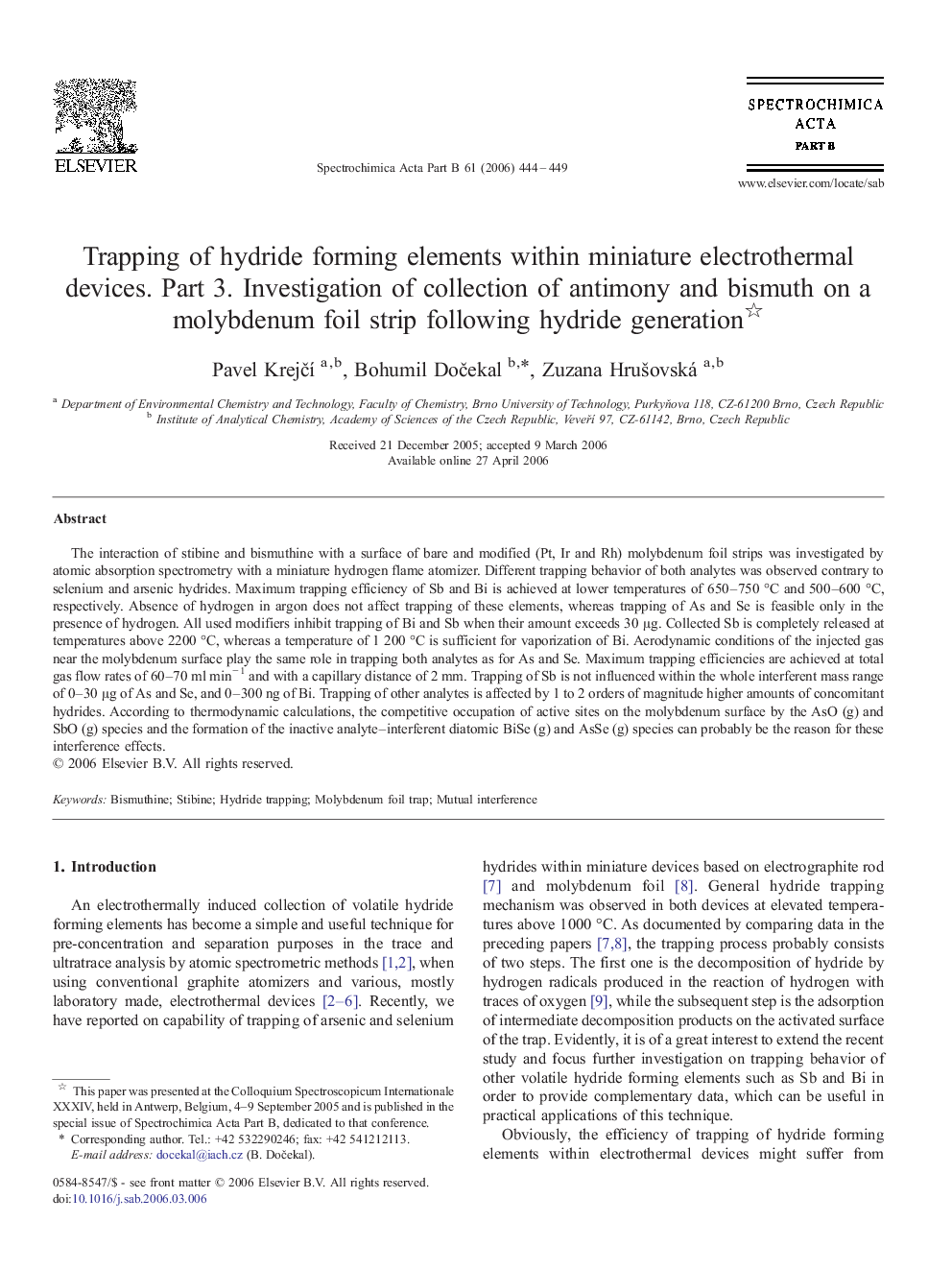| Article ID | Journal | Published Year | Pages | File Type |
|---|---|---|---|---|
| 1241479 | Spectrochimica Acta Part B: Atomic Spectroscopy | 2006 | 6 Pages |
Abstract
The interaction of stibine and bismuthine with a surface of bare and modified (Pt, Ir and Rh) molybdenum foil strips was investigated by atomic absorption spectrometry with a miniature hydrogen flame atomizer. Different trapping behavior of both analytes was observed contrary to selenium and arsenic hydrides. Maximum trapping efficiency of Sb and Bi is achieved at lower temperatures of 650-750 °C and 500-600 °C, respectively. Absence of hydrogen in argon does not affect trapping of these elements, whereas trapping of As and Se is feasible only in the presence of hydrogen. All used modifiers inhibit trapping of Bi and Sb when their amount exceeds 30 μg. Collected Sb is completely released at temperatures above 2200 °C, whereas a temperature of 1 200 °C is sufficient for vaporization of Bi. Aerodynamic conditions of the injected gas near the molybdenum surface play the same role in trapping both analytes as for As and Se. Maximum trapping efficiencies are achieved at total gas flow rates of 60-70 ml minâ 1 and with a capillary distance of 2 mm. Trapping of Sb is not influenced within the whole interferent mass range of 0-30 μg of As and Se, and 0-300 ng of Bi. Trapping of other analytes is affected by 1 to 2 orders of magnitude higher amounts of concomitant hydrides. According to thermodynamic calculations, the competitive occupation of active sites on the molybdenum surface by the AsO (g) and SbO (g) species and the formation of the inactive analyte-interferent diatomic BiSe (g) and AsSe (g) species can probably be the reason for these interference effects.
Related Topics
Physical Sciences and Engineering
Chemistry
Analytical Chemistry
Authors
Pavel KrejÄÃ, Bohumil DoÄekal, Zuzana HruÅ¡ovská,
